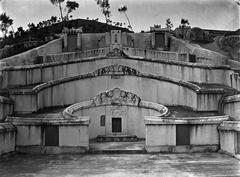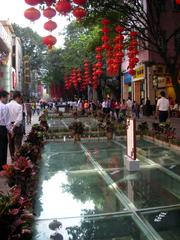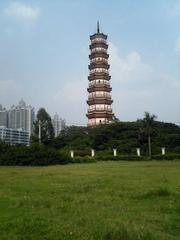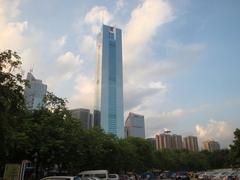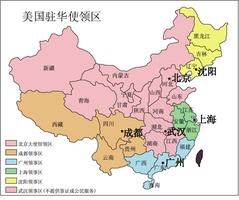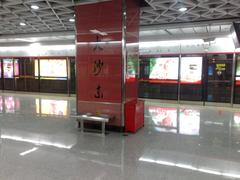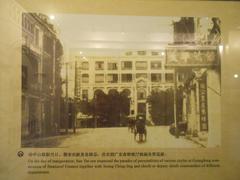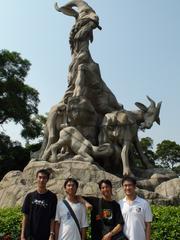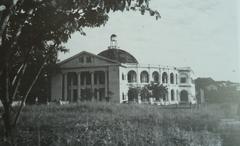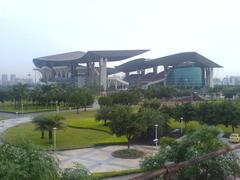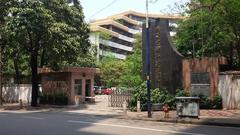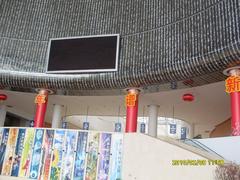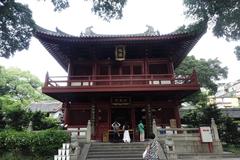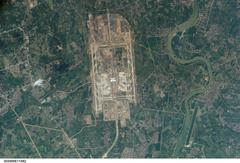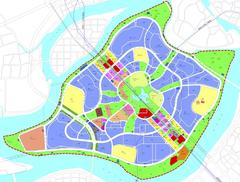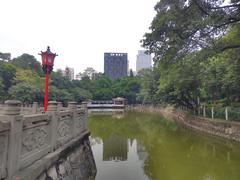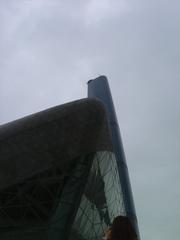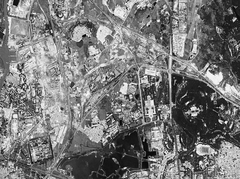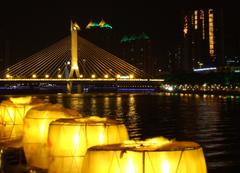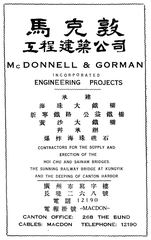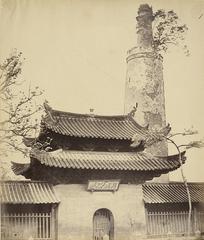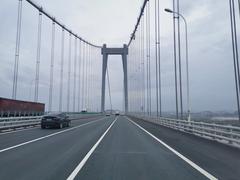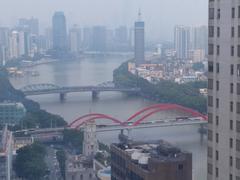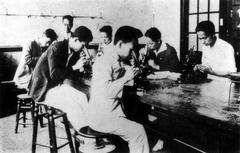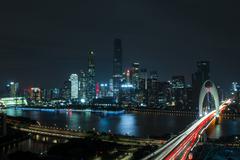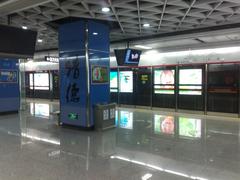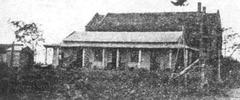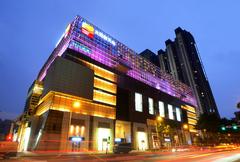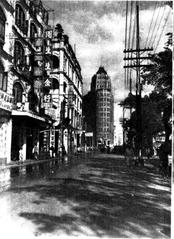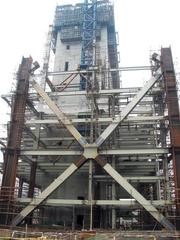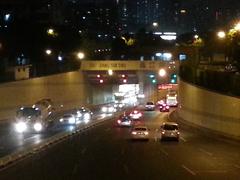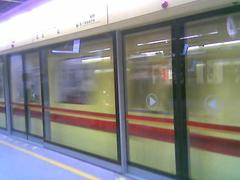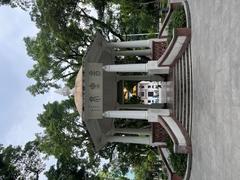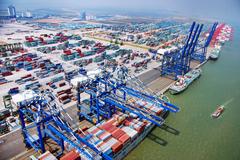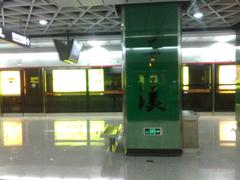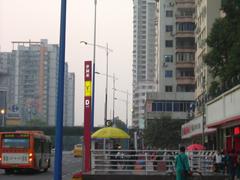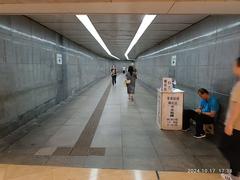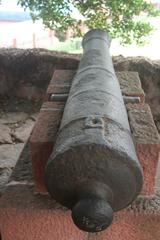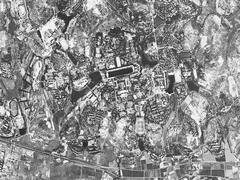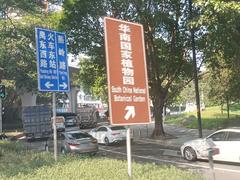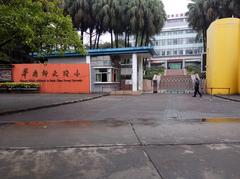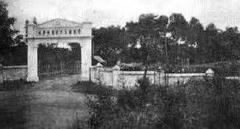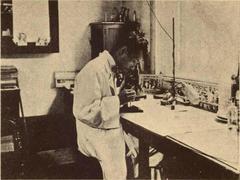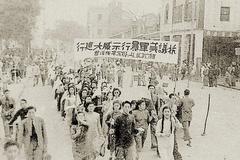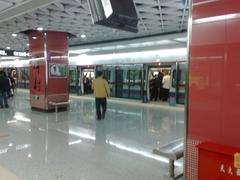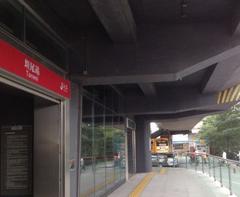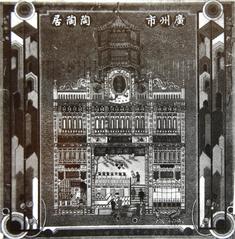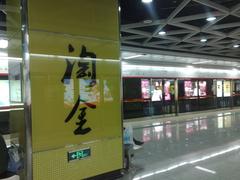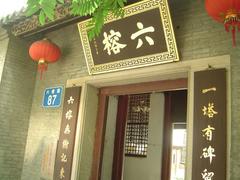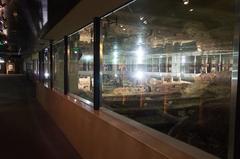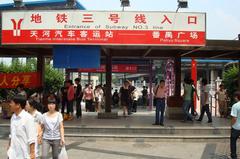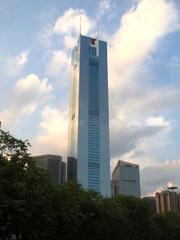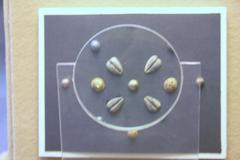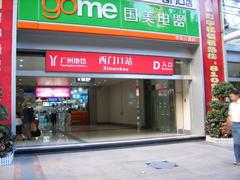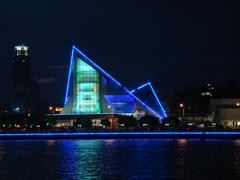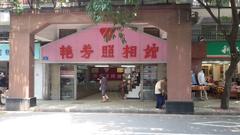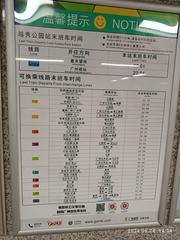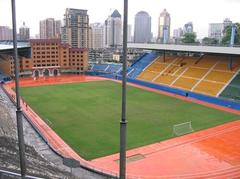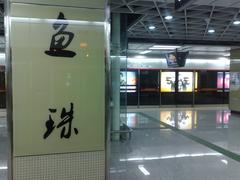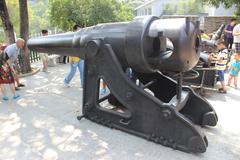Humen Pearl River Bridge: Visiting Hours, Tickets, and Travel Guide in Guangzhou, China
Date: 14/06/2025
Introduction
The Humen Pearl River Bridge stands as a testament to Guangdong Province’s rapid modernization and is a marvel of contemporary engineering. Connecting the bustling cities of Guangzhou and Dongguan across the Pearl River, the bridge serves as a crucial artery in the Pearl River Delta—one of China’s most economically vibrant regions. Not only does it play a central role in transportation and logistics, but it also offers visitors a chance to witness a masterpiece of structural design and regional significance. Since opening to traffic in 1997, the Humen Pearl River Bridge has drastically reduced travel times, fostered economic integration within the Guangdong-Hong Kong-Macao Greater Bay Area, and become an iconic landmark admired by both locals and visitors (TravelChinaGuide; TRID Database; MarineLink).
This guide covers the bridge’s historical background, innovative structural design, cultural and economic significance, and essential visitor information—including visiting hours, ticketing, transportation, accessibility, nearby attractions, and practical travel tips. Whether you’re a history enthusiast, an engineering admirer, or a traveler seeking spectacular views and local culture, this comprehensive resource will help you make the most of your visit.
Contents
- Historical Background
- Structural Composition and Design Innovations
- Visiting the Humen Pearl River Bridge
- Strategic Infrastructure and Economic Integration
- Practical Tips for Visitors
- Frequently Asked Questions (FAQ)
- Emergency Contacts and Visitor Support
- Visuals and Interactive Media
- Conclusion & Travel Advice
- Sources and Further Reading
Historical Background
Early Transportation and the Need for a Bridge
The Pearl River Delta has been a vital trade and cultural corridor in southern China for centuries, with water transport dominating since the Western Han Dynasty (Nature, 2024). By the late 20th century, explosive industrialization in Guangdong—especially in Guangzhou and Dongguan—demanded new transportation solutions. Ferries, including the Humen Automobile Ferry Port (opened in 1991), could no longer meet the region’s needs (SCIRP, 2021).
Conception and Construction
The Guangdong Provincial Government launched the Humen Bridge project in the early 1990s, with construction taking place from 1992 to 1997. The bridge stretches 15.76 kilometers and connects Guangzhou’s Nansha District to Dongguan’s Humen Town, carrying a six-lane expressway designed for speeds up to 120 km/h (TravelChinaGuide). The project was overseen by leading Chinese engineers, prioritizing both technical excellence and regional unity (Chinawiki).
Opening and Impact
Officially opened on June 9, 1997, the bridge revolutionized transportation in the Pearl River Delta, shortening travel distances by over 120 kilometers and fostering economic development throughout the region (Seetaoe). Today, it remains a critical corridor, far exceeding initial traffic projections.
Structural Composition and Design Innovations
Bridge Layout and Sections
The Humen Pearl River Bridge spans 3,618 meters, accommodating a major expressway and integrating multiple bridge types to address the distinct geographical and navigational requirements of the river (TRID Database). The structure comprises:
- Eastern Approach
- Main Navigation Channel Bridge (Steel Suspension)
- Middle Section
- Auxiliary Navigation Channel Bridge (Prestressed Concrete Rigid Frame)
- Western Approach
This segmentation allows optimal adaptation to varying spans, clearances, and foundation conditions.
Main Navigation Channel: Steel Suspension Bridge
- Central Span: 888 meters, ranking among China’s longest at the time.
- Vertical Clearance: 60 meters to accommodate maritime traffic.
- Suspension System: Main cables spaced 33 meters apart with a 1:10.5 sag-to-span ratio, anchored in massive abutments.
- Towers: Nearly 148 meters tall (with 90 meters above deck), built as rigid hollow reinforced concrete frames.
- Foundation: Bored piles tailored to variable riverbed geology (TRID Database).
Auxiliary Navigation Channel: Prestressed Concrete Rigid Frame
- Main Span: 270 meters—significant for concrete bridge technology in the 1990s.
- Piers: 30 meters high, twin flexible hollow box section legs, each anchored by 32 large-diameter piles.
- Construction: Balanced cantilever method allowed segmental construction without disrupting river traffic.
Engineering Challenges and Solutions
- Navigation: High clearances and wide spans ensure unhindered shipping.
- Geotechnical Adaptation: Varied geology required tailored foundations for stability.
- Wind & Seismic: Aerodynamic profiles and flexible designs enhance resilience to typhoons and earthquakes.
Architectural Significance
- Visual Impact: The bridge’s dramatic silhouette is a regional icon.
- Integration: Approaches blend with the landscape for minimal environmental intrusion.
- Lighting: Nighttime illuminations highlight the structure’s features and contribute to its status as a local landmark.
Visiting the Humen Pearl River Bridge
Access and Visiting Hours
- Bridge Use: Primarily a vehicular expressway (no pedestrian/cyclist access).
- Viewing Platforms: Nearby parks and designated viewing areas are open to visitors, typically from 8:00 AM to 6:00 PM.
- Night Viewing: The bridge is illuminated at night and visible from surrounding public spaces.
Tickets and Entry
- Bridge Crossing: Vehicle tolls apply.
- Viewing Areas: Access is free; ticketed river cruises and some attractions nearby may charge fees.
Transportation
- Public Transport: Buses connect Guangzhou, Dongguan, and adjacent districts to the Humen area. Metro stations are several kilometers away; taxis or ride-hailing apps (e.g., Didi) are convenient.
- By Car: Accessible via the G4W Guangzhou-Shenzhen-Zhuhai Expressway.
- Guided Tours: Local operators often bundle the bridge with historical sites and river cruises (Trip.com).
Best Times to Visit
- Season: October to March (cooler, drier, and clearer).
- Daily: Early mornings and late afternoons offer optimal light and fewer crowds.
Accessibility
- Viewing areas and parks are wheelchair accessible, with paved paths, restrooms, and some facilities for visually and hearing-impaired visitors.
Facilities
- Public restrooms, convenience stores, and restaurants are located near main viewing points and cruise terminals.
River Cruises and Unique Experiences
- Daytime cruises: Depart from Tianzi Wharf or Dashatou Wharf, offering scenic views.
- Night cruises: Showcase the illuminated bridge and cityscape.
- Dinner/themed cruises: Include live music, performances, and special events during festivals.
- Tickets: Range from 60–150 RMB (approx. 8–20 USD). Advance booking recommended (Ruqin Travel).
Nearby Attractions and Historical Sites
- Weiyuan Emplacement: Historic Opium War site near the bridge.
- Humen Opium War Museum: Explores regional history.
- Humen Pearl River Delta Park: Green space with excellent viewpoints.
- Riverfront Promenade: Landscaped walking paths, public art, and recreation (Ruqin Travel).
- Shamian Island: Colonial architecture, tranquil parks.
- Baiyun Mountain: Panoramic city and river views.
- Canton Tower: Landmark observation tower in Guangzhou (China Discovery).
Strategic Infrastructure and Economic Integration
Economic and Regional Significance
The Humen Pearl River Bridge is pivotal to the Pearl River Delta (PRD), a region with a GDP exceeding USD 2 trillion and home to over 70 million people (MarineLink). The bridge enhances connectivity across Guangzhou, Dongguan, Shenzhen, and the wider Greater Bay Area, directly supporting trade and mobility.
Port and Logistics
Linked closely with Humen Port, the bridge streamlines the movement of goods between manufacturing zones and maritime terminals, strengthening Dongguan’s global manufacturing role and supporting efficient distribution (MarineLink).
Urbanization and Mobility
The bridge has dramatically reduced travel times (from hours to under 30 minutes between Guangzhou and Dongguan), spurring urban development and improving regional transit networks (Trip.com).
Innovation and Sustainability
By enabling high-value manufacturing and research collaboration, the bridge supports industrial upgrading. Environmental measures—including pollution controls and smart traffic management—align with Guangdong’s sustainability goals.
Cultural & Tourism Impact
The bridge is a popular sightseeing spot, featured in regional tours and festivals, and has helped boost tourism in the Greater Bay Area, which welcomed over 150 million visitors in 2024.
Future Development
Continued investment focuses on increasing capacity, integrating intelligent transport systems, and climate resilience (MarineLink).
Practical Tips for Visitors
- Weather: Check forecasts and dress appropriately.
- Timing: Avoid weekends and holidays for a quieter experience.
- Language: Bilingual signage is common, but translation apps can help.
- Payments: Mobile payments are widely accepted; carry cash as backup.
- Safety: Respect signage—pedestrian access is limited to safe viewing areas; drones are prohibited.
Frequently Asked Questions (FAQ)
Q: Can I walk or cycle across the Humen Pearl River Bridge?
A: No, the bridge is a high-speed expressway and not open to pedestrians or cyclists.
Q: Are there guided tours?
A: While there are no official bridge tours, local operators offer river cruises and tours that include historical context.
Q: What are the best viewpoints?
A: Humen Pearl River Delta Park, waterfront promenades, and river cruises all offer excellent views.
Q: How do I get tickets for cruises or events?
A: Tickets can be booked online or at cruise terminals; advance booking is recommended during peak seasons (Ruqin Travel).
Q: Are facilities available for disabled visitors?
A: Yes, ramps and tactile paving are available at viewing areas.
Emergency Contacts and Visitor Support
- Police: 110
- Medical Emergencies: 120
- Fire: 119
Visitor centers provide multilingual support and maps.
Visuals and Interactive Media
- Virtual tours and interactive maps are available on official tourism websites.
- Photography tips: Early morning and late afternoon light are optimal. Use a wide-angle lens for full-span shots; tripods are recommended for night photography.
- Alt tags: Use descriptive tags like “Humen Pearl River Bridge visiting hours view” and “Humen Pearl River Bridge tickets and sightseeing.”
Conclusion & Final Travel Advice
The Humen Pearl River Bridge embodies China’s engineering prowess, economic dynamism, and cultural richness. While direct pedestrian access is restricted, the bridge’s grandeur can be experienced from surrounding parks, viewing platforms, and river cruises. Its integration with historical sites and urban landscapes enhances the visitor experience, and ongoing development ensures its role in the region’s future.
For the most rewarding visit:
- Plan for early morning or late afternoon.
- Explore nearby attractions and historical sites.
- Consult official resources for up-to-date information on access and events.
Experience this remarkable landmark and discover how the Humen Pearl River Bridge continues to bridge history, innovation, and the bustling life of southern China (TravelChinaGuide; MarineLink; Trip.com).
Call to Action
Ready to visit the Humen Pearl River Bridge? Download the Audiala app for real-time travel updates, ticket bookings, and exclusive deals. Explore related posts on Guangzhou’s historical sites and Pearl River attractions, and follow us on social media for the latest travel tips and event news!
Sources and Further Reading
- Visiting the Humen Pearl River Bridge: History, Tickets, and Travel Tips, 2025, TravelChinaGuide
- Humen Pearl River Bridge: Visiting Hours, Tickets, and Engineering Marvel in Guangdong, 2025, TRID Database
- Humen Pearl River Bridge: Visiting Hours, Tickets, and Exploring Guangzhou’s Iconic Landmark, 2025, MarineLink
- Complete Guide to Visiting Humen Pearl River Bridge: Visiting Hours, Tickets, and Guangzhou Historical Sites, 2025, Trip.com
- How to Plan Your Cruising on the Pearl River in Guangzhou, Ruqin Travel
- Guangzhou Attractions Guide, China Discovery
